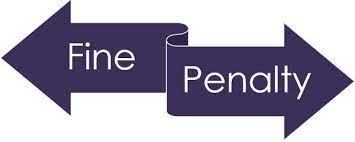We continue our exploration of the resolution of the FCPA enforcement action involving the Swiss trading firm G Trafigura Beheer B.V. (Trafigura), an international commodity trading company with its primary operations in Switzerland. The company pleaded guilty and will pay over $126 million to resolve an investigation stemming from the company’s corrupt scheme to pay bribes to Brazilian government officials to secure business with Brazil’s state-owned and state-controlled oil company, Petróleo Brasileiro S.A. Petrobras (Petrobras). The matter was resolved via a Plea Agreement. Information detailing the company’s conduct was also issued.
Given the multi-year nature of the bribery scheme, how high it went up in the organization, the lack of self-disclosure, and the admittedly lack of stellar cooperation, one might wonder how Trafigura could obtain any discount from their overall penalty. There was no total figure to show the amounts of bribes paid by Trafigura in the Plea Agreement. However, it was noted that Trafigura earned over $61 million in profits from the business obtained through the corrupt scheme. Yet Trafigura received a 10% discount off the 50th percentile of the applicable US Sentencing Guidelines acceptable range. How did Trafigura achieve this discount?
Cooperation
The starting point for this analysis is the Plea Agreement. However, we should note that Trafigura failed to preserve and produce certain documents and evidence on time and, at times, took positions inconsistent with full cooperation, “particularly during the early phase of the department’s investigation.” Additionally, Trafigura was slow to exercise disciplinary and remedial measures for certain employees whose conduct violated company policy. Finally, Trafigura “ultimately accepted responsibility for its criminal conduct. Its previous position in resolution negotiations also caused significant delays and required the offices to expend substantial efforts and resources to develop additional admissible evidence before the defendant constructively reengaged with the offices in agreeing to a negotiated resolution.”
This cooperation included (i) providing timely updates on facts learned during its internal investigation, (ii) making factual presentations to the DOJ, (iii) facilitating the interviews of employees and agents, including an employee located outside the United States, and arranging for counsel for employees where appropriate; (iv) producing relevant non-privileged documents and data to the department, including documents located outside the United States in ways that navigated foreign data privacy laws, accompanied by translations of certain documents; and (v) providing all relevant facts known to it, including information about individuals involved in the conduct. The compliance professional should note that Trafigura provided documents to the DOJ outside the United States in ways that navigated foreign data privacy laws.
The Remediation
The Plea Agreement also included information on the remediation Trafigura carried out. Trafigura also took steps to fix the problems. These included (i) creating and implementing better, risk-based policies and procedures for things like fighting corruption, using middlemen and consultants, making payments to third parties, and assessing the risk of joint ventures and equity investments; (ii) improving the processes and controls around high-risk transactions; (iii) spending more money on training employees and testing their compliance; and (iv) making sure that the problems were fixed regularly. The final point is perhaps the most significant, as we have now seen the DOJ call out Albemarle and SAP for discontinuing their use of third-party agents.
Prior Misconduct
Trafigura also had prior misconduct, which the DOJ called out. While noting it was “not recent,” Trafigura had sustained a 2006 guilty plea for entering goods through false statements and a 2010 conviction for violating Dutch export and environmental laws concerning the discharge of petroleum waste in Côte d’Ivoire.
Fine Calculation
The explanation from the DOJ raised an open question in the minds of many compliance professionals regarding recent FCPA enforcement. That question was about how culture and prior misconduct were factored into the acceptable determination. This case follows the recent SAP enforcement action, in which a similar analysis was conducted. The DOJ does not discount fines off the low end of an acceptable range but instead in the middle between the high and low range. In the case of Trafigura, the high end of the acceptable range (after the complete calculation under the Sentencing Guidelines) was $170,345,061, and the low range was $85,172,530. As a result of the defendant’s cooperation and efforts to make things right, as well as the fact that some Trafigura Group companies had been guilty of similar crimes in the past, the DOJ took 10% off the middle of the two ranges, which put them in the 50th percentile. This led to a “total criminal fine” of $80,488,040, 10% less than the fifth percentile above the lowest possible fine under the Sentencing Guidelines.
Join us tomorrow, and we will conclude with lessons learned from the Trafigura enforcement action.








